All You Need to Know About the Nazca Lines in Peru

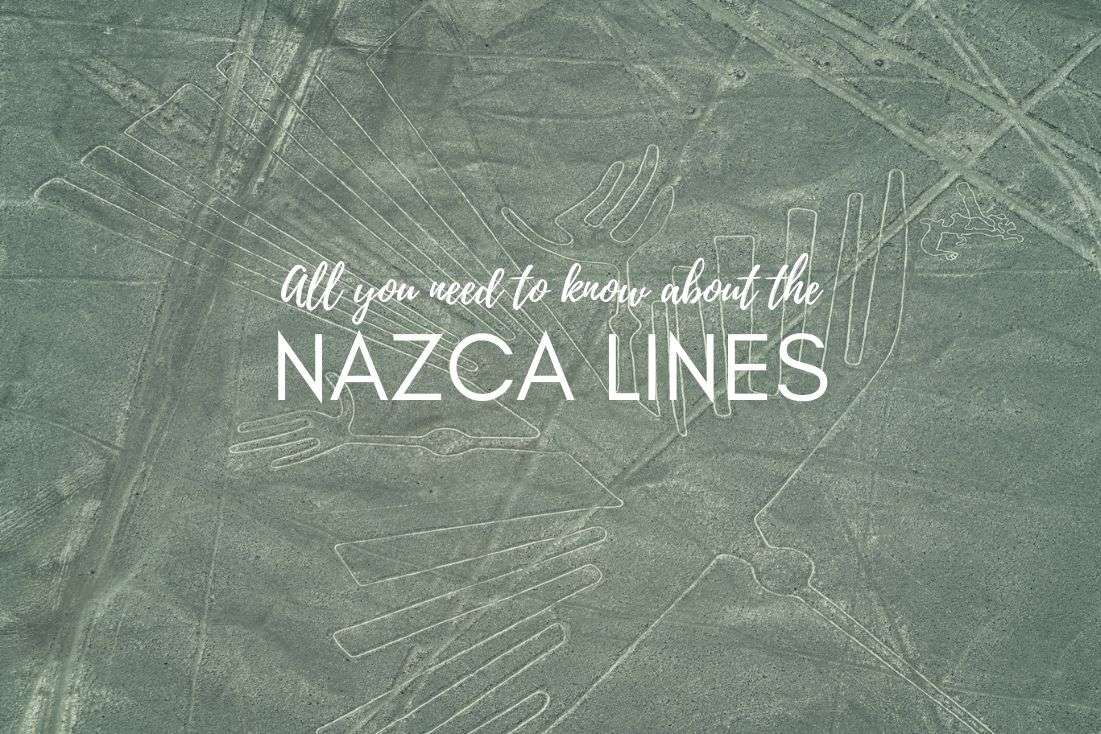
The Nazca lines are a collection of hundreds of unusual geoglyphs (designs produced on the ground) in the middle of Peruvian desert. For years, archaeologists and scientists have been wondering about the origin of these mysterious images.
Some of the hypotheses are more widely accepted by scientists, but other researchers disagree and continue trying to investigate Peruvian wonder. Nazca lines were created by an old civilization during hundreds of years, beginning around 200 B.C. The shapes depicted vary widely in size, form, and complexity. However, there are those that are most admired and popular among visitors.
You might also be interested in reading:
- The Best 3-Day Cusco Itinerary with Sacred Valley Day Trip
- A 2-Week Peru Itinerary: A Day-By-Day Trip Plan
- Top 14 Handpicked Luxury Hotels in Peru (With Prices)
- The 10 Best Ruins to Visit in Peru
- Top 9 Places to See in Sacred Valley
Where are the Nazca Lines located?
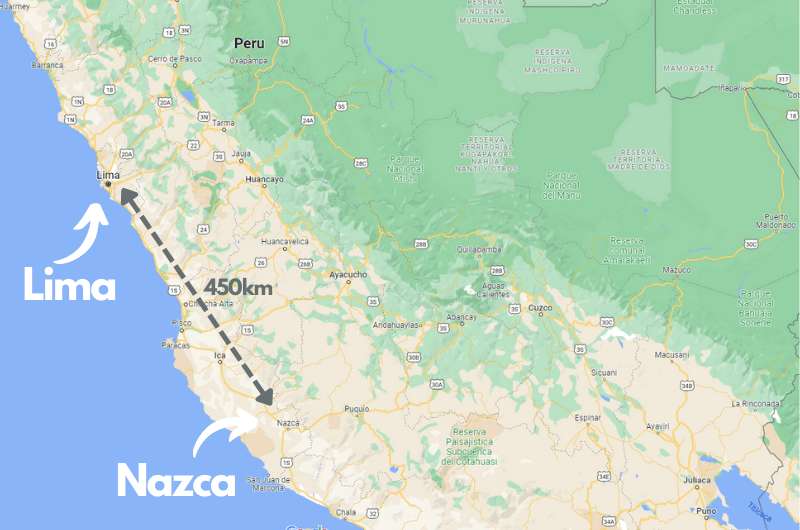
Nazca desert on the map
The Nazca lines are a network of intersecting paths that cover a large area. They are situated in the same-named desert (Nazca), the administrative center of Ica in Peru, which is 450km (280 miles) away from Lima. They are thought to have been created through the extraction of materials from the earth.
The form is made visible by pebbles of a light-brown color. Because of the dry climate and lack of rainfall, creations have been preserved to this day.
It is best to wear airy, light-colored clothing and closed, comfortable shoes when visiting the Nazca Plateau. The Nazca Desert is a year-round destination as it gets almost zero rainfall. The most popular time to visit Nazca Desert is from December to March. During this time, the temperature does not fall below 27°C (80°F). Don't forget your sunscreen and protective headgear.
Even though the archaeological site encompasses 185,000 acres, the majority of the geoglyphs may be seen in the vicinity of Nazca, which is situated in Peru. On the Pan-American Highway, getting there will take you a full day of driving from Lima.
So, now you understand where the geoglyphs are located, but there’re some options of how to get there.
How to get to the Nazca Lines
Although the Nazca Lines are not as popular as Machu Picchu, for sure they are worth visiting.
Many people go to see Nazca Lines from Lima or Cusco. Because of Cusco's higher altitude, most visitors opt to fly into Lima and go to Machu Picchu via the Gringo Trail, which passes via Nazca. Although a little plane is the greatest option to observe the Nazca Lines (on an organized tour), there are no regular flights to Maria Reiche Neuman Airport in Nazca. Nazca is only accessible by bus or car.
Tip: You can actually see a Nazca Line on the boat trip to Islas Ballestas.
By car

We rented a car in Peru for our journey to Paracas, check out our article about driving in Peru
Visitors can also rent a car and undertake the 7-hour journey from Lima to Nazca along the Pan-American Highway. During the trip, there are many gorgeous spots to stop, including Pisco, Ica, and Huacachina. These are all close to Paracas National Reserve, a spot we highly recommend.
In general, it is important to keep in mind that Peruvian roads are not as good as German autobahns or Swiss motorways and you risk feeling like ice in a shaker, though for some people, that can be a fun adventure. Another important consideration is that other drivers in Peru have a hot temper and may not always drive carefully. The Pan-American Highway is a very good highway though, so you shouldn’t be worried if you do undertake the long drive.
You can hire a cab or a private driver via your hotel or a booking site if you don't want to deal with the headache of driving in a foreign country. Renting a car allows you to stop whenever you want for a break or to see anything interesting along the road.
More about which car rental companies (actually, there’s just one) we can recommend in our Driving in Peru article.
By bus

Bus trips... brrrr
In Peru, using the bus is one of the most convenient and popular forms of transportation. As you know, we wouldn’t set foot on a bus, but I’ll include the info for the sake of providing all the options.
Cruz del Sur and Civa are the bus companies that provide good journeys to Nazca. Cruz del Sur is a safe, affordable, and convenient choice ($25 to $32), with an average of 15 departure times each day. However, most of the employees are unable to communicate in English.
Options of how to see the Nazca Lines
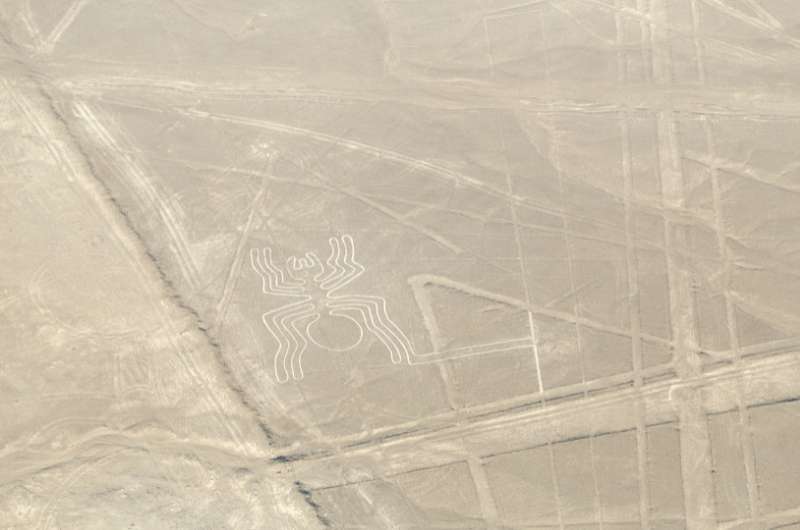
Nazca spider
Since the geoglyphs are huge, their shapes are hard to make out from the ground. You need to go up, preferably way up, in order to see them in their entirety.
From a plane
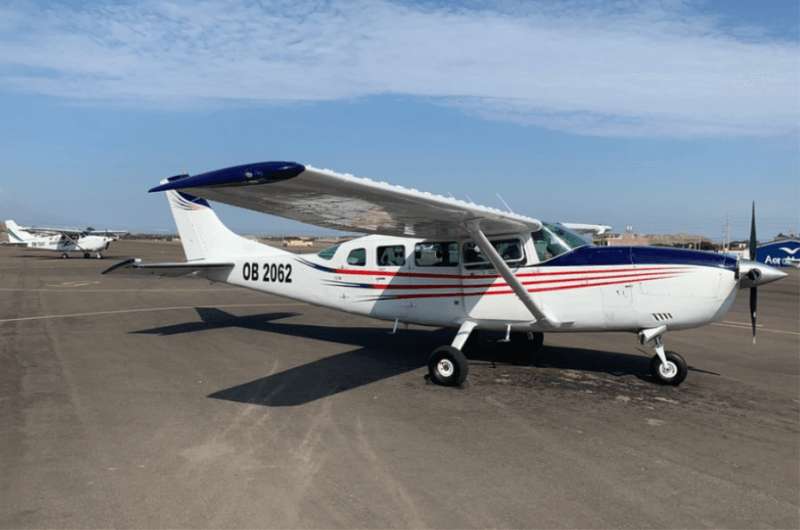
The plane of AeroNasca
The sole airport that provides flights from Nazca to the Nazca Lines is Maria Reiche Neuman Airport, named for an archaeologist who investigated the Nazca Lines. Because of the airport's closeness to the geoglyphs, flights from here are more frequent and cost around $80 – 100, which is not that expensive for such an experience.
Aeronasca, AeroParacas, and Movil Air are among the reliable airlines. These trips last half an hour and include several passes over geoglyphs. From above, the images can be seen well, also during this time you can observe almost all the geoglyphs. As it was mentioned before, they had been built for gods, so from the height of the flight it will be possible to see images in the way in which they have been meant to be seen.
The planes are tiny, with seating for approximately eight to ten people. Everyone has a window seat for a better view of the ground below. The pilots tilt the aircraft to either side, giving every passenger the finest view of the desert and geoglyphs.
However travelers are not always delighted by the view and experience. People often become nauseous because of such aircraft motions and have to sit with a barf bag for the duration of the journey. So, bring motion sickness medicine with you, and don’t eat anything before the flight!
Travel agencies also often offer one- and two-day tours with organized transfers, but we prefer to plan our own trip and set up everything ourselves.
From a viewing tower
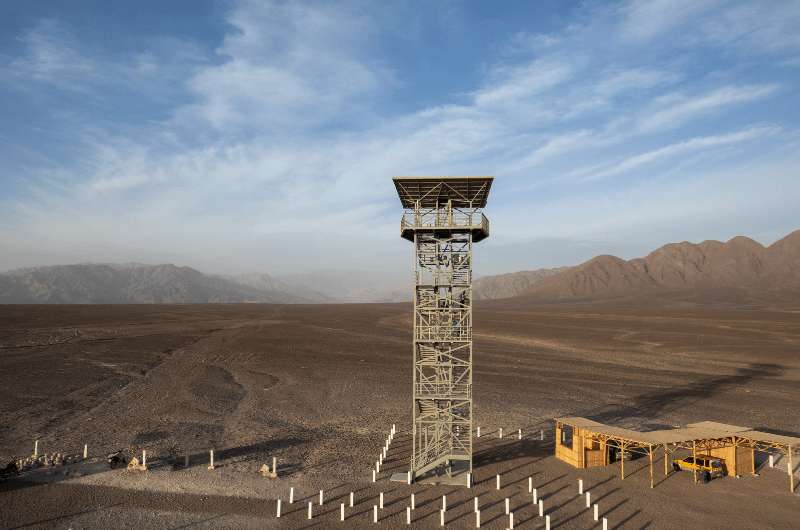
The Nazca Viewing Tower
The Nazca Viewing Tower is located about 25 kilometers from Nazca and is easily accessible by car.
We have some good news and a bit of bad news for you. Unfortunately, only three images are viewable from the tower. The good thing is that there is no time limit and that the cost is merely USD1.
The height of the tower is breathtaking! Can you imagine, it is about 110 m (365 ft), which is equal to the Bank of America Tower or the Empire State Building?
If you have enough time, we recommend you get the full experience of the Nazca Lines by having a flight as well as climbing the tower.
Our top tips for visiting the Nazca Lines:
- Visit the desert from December to March
- Don’t forget about sunscreen and protective headgear
- Take a plane tour to see the shapes best
From a viewpoint behind a museum
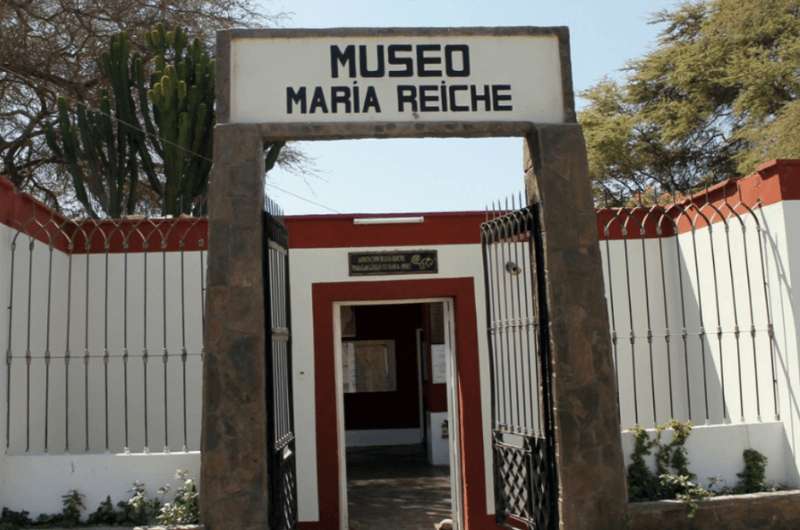
Maria Reiche Museum
Moreover, a natural viewpoint is located near the Maria Reiche Museum. There you can also see some of the geoglyphs. Just follow the path behind the museum. The museum itself is small but interesting and is a good addition to the tour of the area.
The museum used to be the home of the “Lady of the Lines”, as Maria was known for her life-long efforts to study and protect the Nazca Lines. You’ll be able to see a stuffed Maria sitting at her desk in the room that was left as it was when she was working there. Old bed, measuring tools, and German flag included, as long as other rooms full of maps, drawings, and artifacts found in the area.
Maria Reiche herself is buried in the garden of the museum.
History of the Nazca Lines
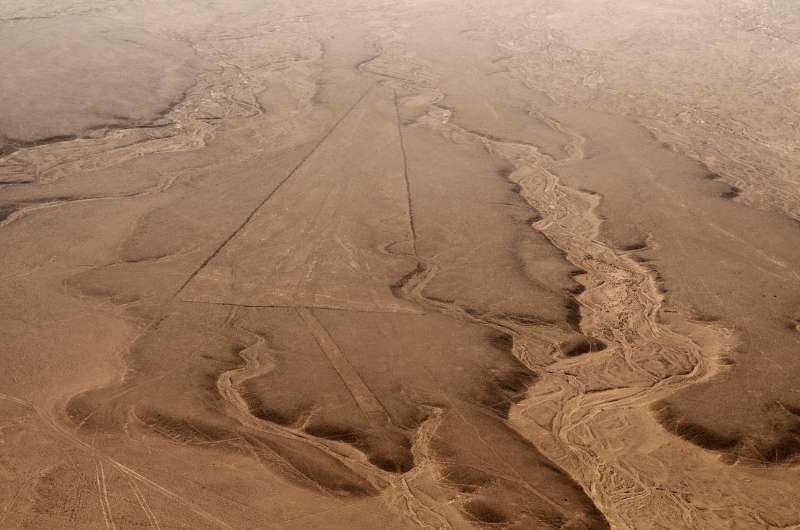
Another cool Nazca Lines
Even modern researchers find the history of the Nazca lines fascinating and mystical. Many legends surround it, because such smooth drawings of the ancient Nazca civilization would have been extremely difficult to create (which lived between 300 BC and 600 AD and did not even have its own writing).
Modern architects are impressed by the drawings' precision and symmetry, which can only be achieved by building the right design. As a result, there are several conspiracy theories regarding the origin of geoglyphs. According to one of the theories, the Nazca lines were created by aliens.
Although some modern researchers believe, the Nazca lines were a kind of tribute to gods and were used for ritual purposes. This fact, however, has yet to be confirmed.
The Nazca lines were first mentioned in a book of a Spanish conquistador in 1553 and discussed for the first time in the 20th century at a conference in Lima in 1939. However, the first in-depth research into the Nazca lines was done in 1940 – 1941 by American Paul Kosok. He was joined by American Richard P. Schaedel and German-born Peruvian Maria Reiche. The trio tried to answer the ultimate question: what do these lines mean?!
Maria Reiche then dedicated her life to studying the geoglyphs and their mystical properties, even moving from Lima to live near the Nazca Lines and protect and study them daily. After her death, Maria’s home was converted into a museum near the Nazca Lines, the Maria Reiche Museum. As a result of Reiche’s efforts, the Nazca lines were added to the UNESCO World Heritage List in 1994.
Geoglyphs are full of mysticism and riddles. Many interesting facts and riddles can be learned by studying the Nazca lines and delving into their history. We would like to share with you some of them.
Interesting facts about Nazca Lines
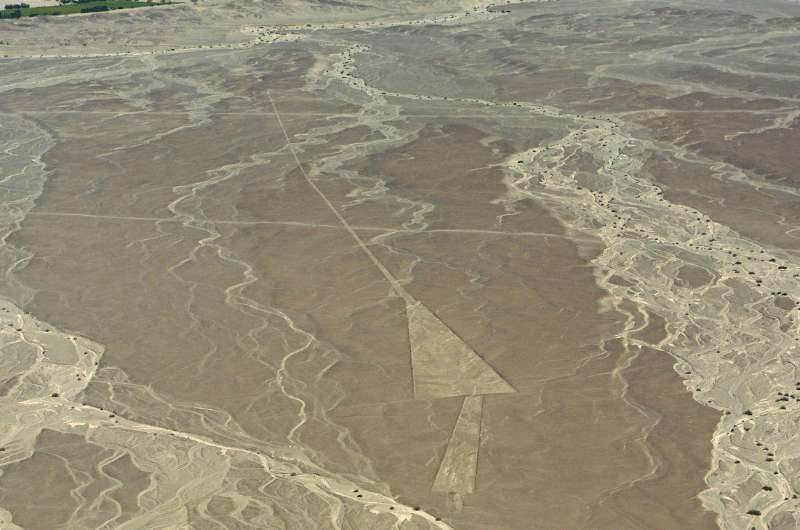
How did they manage to draw this without a ruler?!
Only from a bird's eye view are the geoglyphs of Nazca clearly visible. The images lose their shape as you move closer to them. The lines appear to have been drawn with the help of birds. After all, there is no nearby elevation from which to view the drawings.
The climate and soil characteristics of the plateau are such that trampled trails and car tire tracks remain on the surface indefinitely. The workers creating the lines, on the other hand, left no trace. Were they hovering above the ground? Mysterious!
The Nazca lines are arranged in a mathematical pattern. All the proportions are exactly met, and the image looks perfectly symmetrical. But how could it be possible in those days? Is it possible that the sketches were supposed to be passed to future generations? It's a puzzle.
The geoglyphs of Nazca are so flat that staves appear to have been used in some places for "correct" digging. But how were the sinuous silhouettes of fingers, wings, necks, and other body parts created?
The study and consideration of the Nazca Lines is so difficult that many scientists believe that still there is no comprehensive catalog of geoglyphs exists.
It's hard to imagine how difficult and time-consuming it is to dig trenches of this size, especially by hand!
They were likely very important to the Nazca culture. Why? Some hypotheses exist:
4 theories of what the Nazca Lines mean
No one has come up with the exact answer to what the Nazca Lines really mean, but there are a few theories:
The Nazca Lines were used as an astronomical map
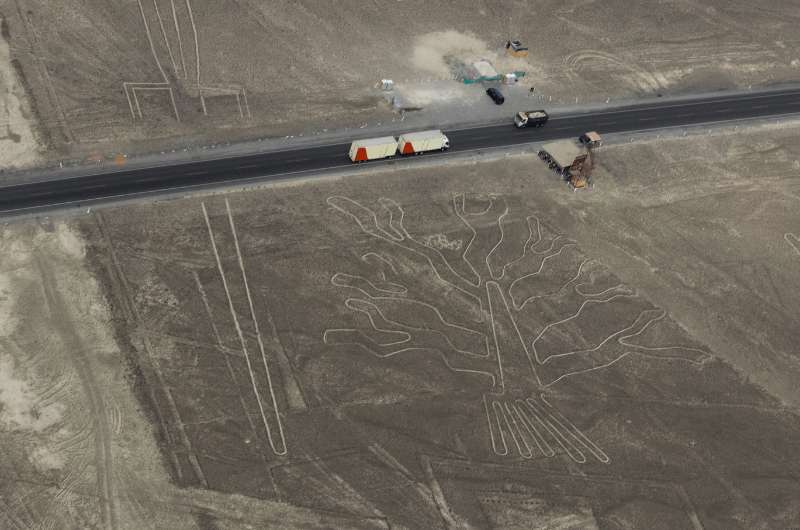
Sure, put a road through it, why not?
If it is so, then the Nazca lines are the largest astronomical map in the world. Many of the figures correspond surprisingly accurately to celestial prototypes (constellations and stars), and the beaks of some birds point to the point of the summer solstice.
The Nazca Lines helped aliens find their way around

Aliens, welcome
This version is fantastic and does not hold up to criticism but is still fondly noted by ufologists and sci-fi fans. According to this theory, alien beings landed in Nazca and transmitted their knowledge to the people. Since then, the people of Nazca considered them deities and worshipped them. Geoglyphs were created thanks to the knowledge received and were an act of honor, as well as the orientation point for alien civilizations.
The Nazca Lines served for communication with the gods
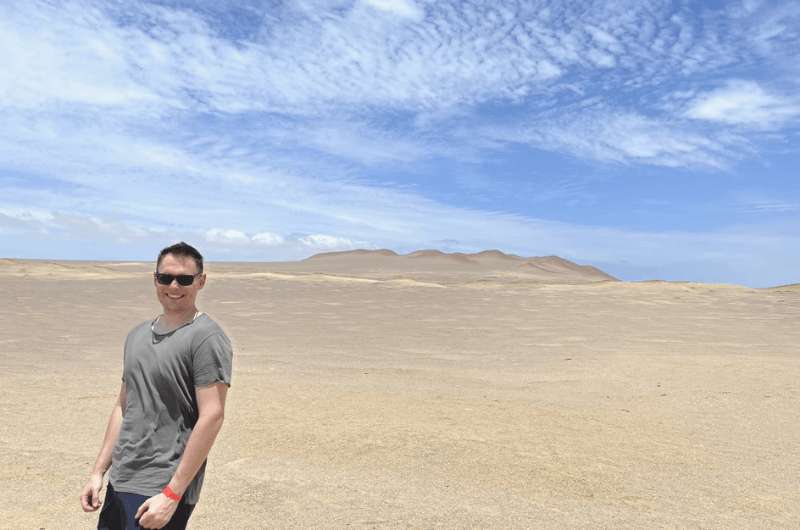
I can think of only one god they could communicate with...
This version explains the hard work of the people who wished to provide a direct link with the deity. This is one of the most realistic theories of the origin of the Nazca lines. Because of the arid climate and low rainfall, the people of Nazca lacked water. These images were an act of service to the gods to send rain in return.
The Nazca Lines were a sophisticated irrigation system

There are other agricultural constructions in Peru, such as the Moray laboratories
Some scholars argue that the Nazca geoglyphs and aqueducts are nothing more than a sophisticated water system that allowed for human habitation in the area. The lines themselves were peculiar markers of where there was water below. However, this theory is very controversial because some of its facts do not coincide with the already available knowledge about the Nazca civilization's way of life. That is why it is criticized by many scientists.
There are so many interesting things to read about the Nazca lines, but it is better to see this miracle with your own eyes at least once.
The most famous Nazca Lines
The most popular forms of Nazca lines are:
Hummingbird
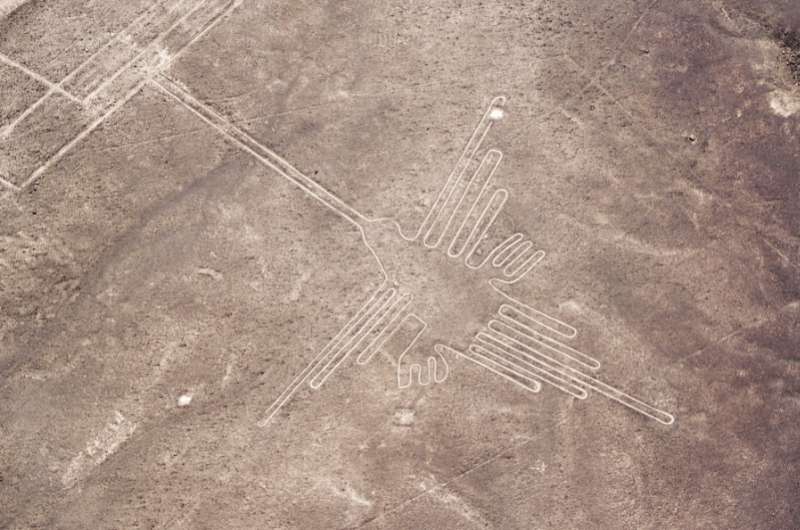
Hummingbird
Which, as it turns out, is not a small bird. The two wings are separated by 66 m (216 ft). According to some historians, this figure represents an oath made to the god to prevent a lack of rain.
The monkey
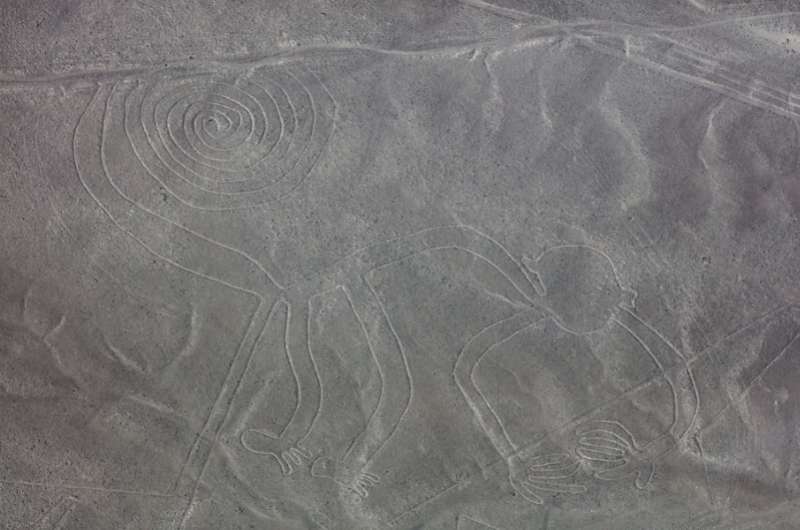
The Monkey Nazca Lines
Its back is shaped in a spiral with nine fingers and measures 135 meters (443 ft). Maria Reiche discovered the figure and drew attention to the fact that the back and hands are directly related to the objects in the sky and the rainy season. The figure of the monkey is thought to represent the Big Dipper constellation.
The Owl Man
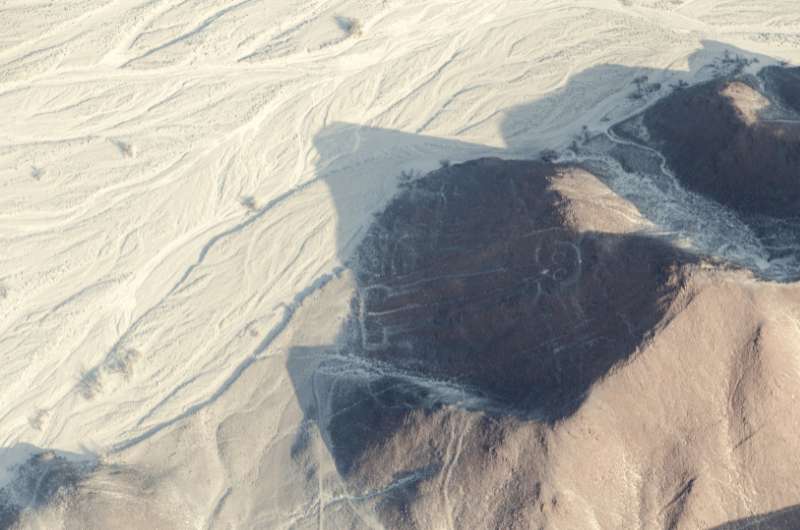
The Owl Man or the Astronaut
To be honest it reminds me more of the cover of the track Astronaut in the Ocean by Masked Wolf. Others agree with me, also calling this shape the Astronaut. According to some pseudo-archaeological theories, the figure's purpose was to send messages to extraterrestrial civilizations.
The Spider

The Spider Nazca Line
The next shape is not for the faint-hearted! It’s a big spider that measures 46 meters (151 ft) in length. This shape is also thought to be a drought-prevention symbol.
The Whale
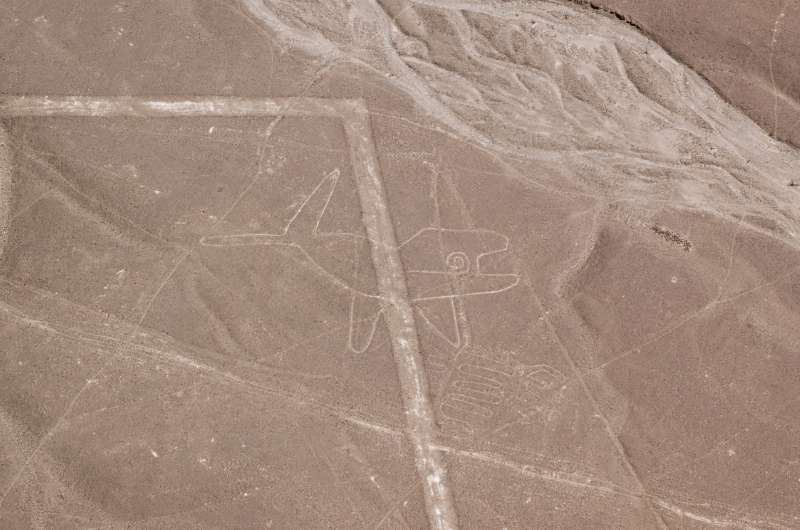
The whale Nazca Line
For some reason, the Nazca civilization depicted a massive whale, which became one of the most popular Nazca Lines patterns. As a reminder, this is all located in the middle of a desert. Researchers believe this is a representation of the sea deity, but where would these people see whales…
Hotels near the Nazca Lines
Finding a place to sleep in Nazca isn’t a problem. Finding a place to sleep in Nazca that is somewhat comfortable and at a certain standard, that’s a little tricky.
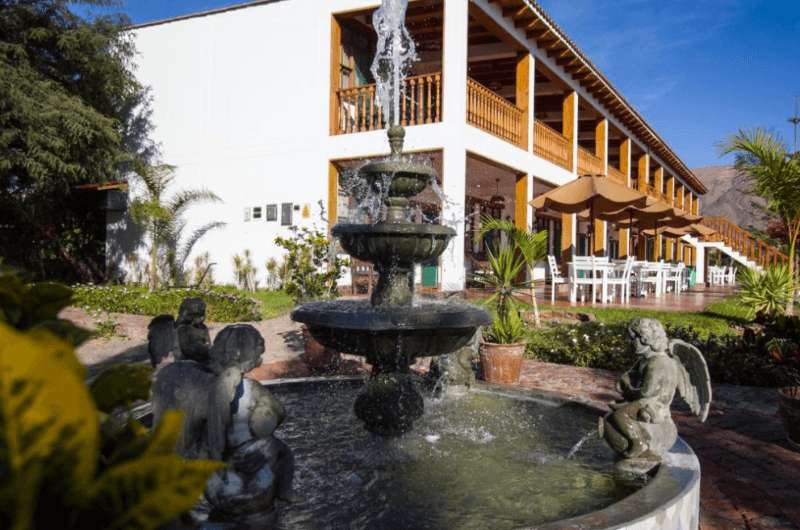
The Casa Hacienda Nasca Oasis in Nazca
There’s Casa Hacienda Nasca Oasis which is officially a 4-star hotel with a nice pool and pretty garden. It resembles a ranch, complete with Spanish style, but without horses. It’s possibly the only hotel of this rating in the city and is a comfortable choice is you prefer to make your way all the way there instead of driving from a further out location.

It’s hard to go sightseeing when you’re staying at a hotel like Hotel & Hacienda La Caravedo.
That further-out location could be Ica, which is 2.5 hours away from Nazca. We recommend going to Ica for the fantastic tour of the oldest distillery in South America—established in 1684—, La Caravedo. Besides learning about and tasting pisco, you can sleep like a king in the Hotel & Hacienda La Caravedo. Bonus points for the fabulous on-site restaurant!
Tip: Read all about our La Caravedo visit in our Paracas article.

Cheers from Karin! She’s enjoying her drink at the DoubleTree Resort by Hilton Hotel
Another option is to just stay in Paracas in our favorite of favorites, the DoubleTree Resort by Hilton Hotel. Lounging by the pool or right on the beach, drinking pisco sour after an outing on the free kayaks while gazing at the flamingos nearby never gets old.
This post may contain affiliate links. We earn a small commission if you make bookings through my links, at no additional cost to you. Thank you for your support!


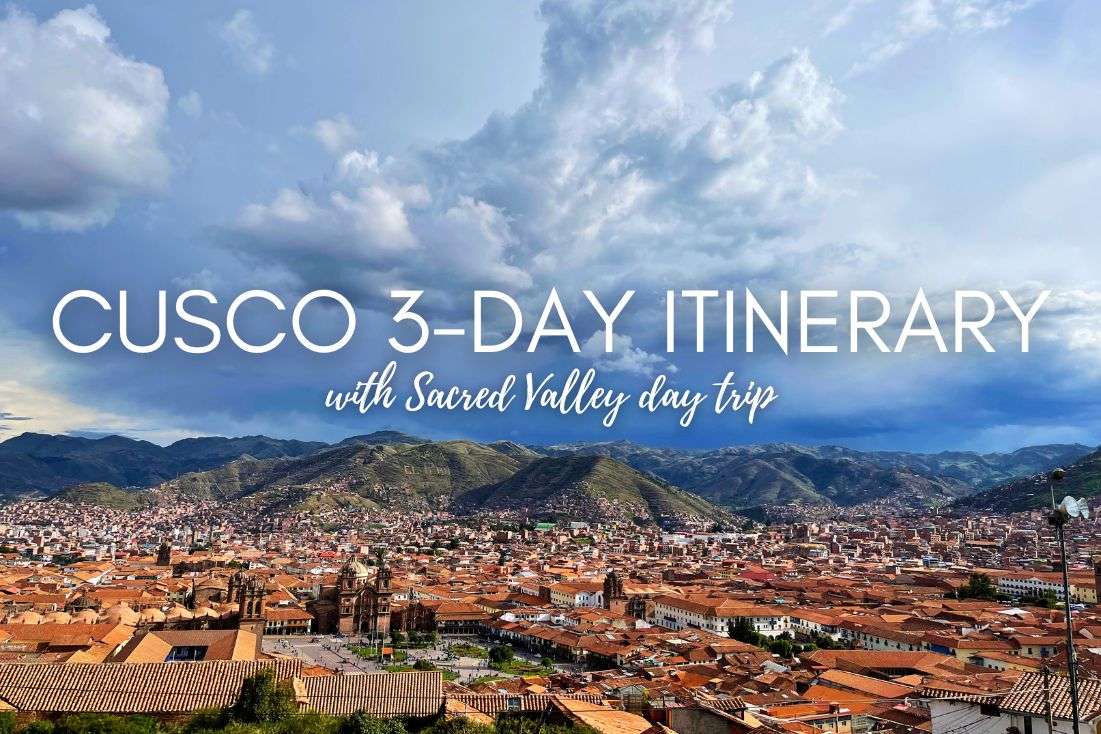







Comments | Thoughts? Give us a shout!